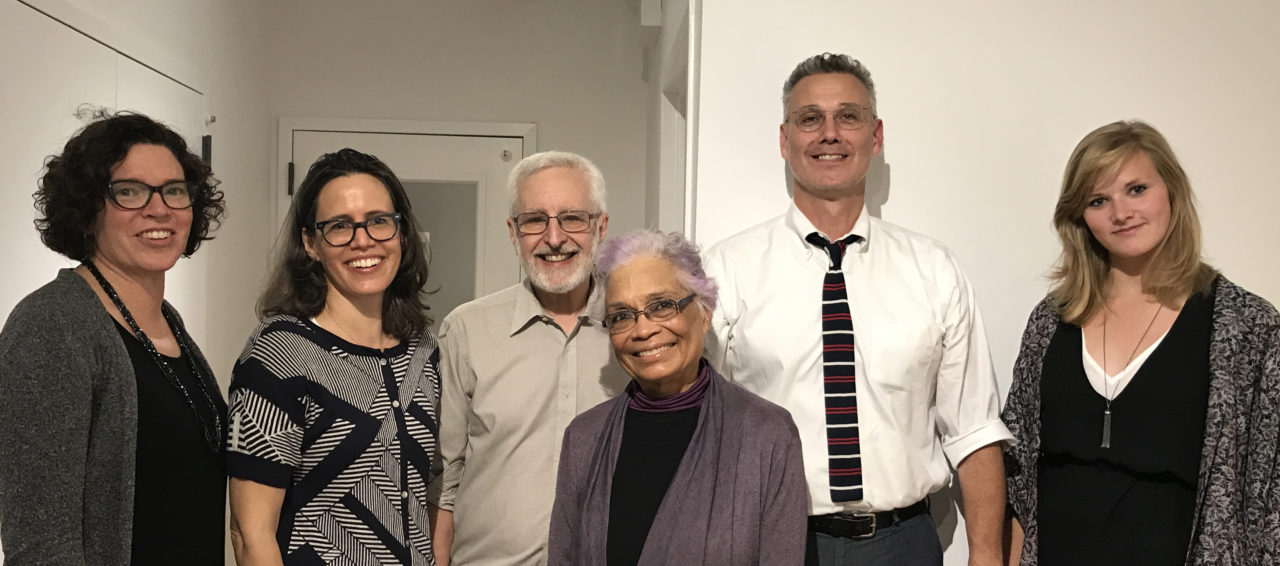by: Jessica Morris
On Wednesday, 10.25.17, the AIANY Social Science and Architecture Committee hosted its second-annual “Social Science and Architecture History Primer.” The audience, a self-professed collection of tour guides, strategists, librarians, social scientists, architects, and disrupters, alongside a panel of invited guests, infused the Center for Architecture with questions, provocations, and statements that pushed and pulled on disciplinary parameters, practices, and responsibilities.
Where the discussion began is not where it ended, and as decreed by moderator Tomas Rossant, AIA, that was precisely the point. Beginning polemically, Rossant offered a maxim: “The thing is not the thing,” and followed up by citing Winston Churchill’s House of Common’s speech, “We shape our buildings; thereafter they shape us.” Where analysis produces actionable evidence, Rossant’s challenge to define the value proposition for including social science research in an architectural practice is: How can the work of these activities be considered a part of basic architectural services? Can we as architects be required, from an ethical standpoint, to integrate social science research into our process, perhaps with a similar intensity and precision as with making specifications?
The first panelist to speak was Dr. Rich Wener, who related the trajectories of the field of environmental psychology and the environmental behavior movement, which have originated and evolved over the last 50 years, to cultural contexts at large. Importantly, Wener noted that the work of social scientists has emerged both as a theory-based field and as one brought about by architects seeking to solve specific social problems. More specifically, Wener tied changes in practice to technological advancements in science and medicine. He cited the radical shift that occurred around mid-century in the culture of institutionalization and psychiatric wards as a direct result of medical advancements and adjustments to institutionalization, such that input from professionals to alter the spatial requirements of facilities was necessary. Wener acknowledged the relationship between technology and institutions, and suggested that this understanding may lead to solutions to deeply embedded socio-cultural issues, such as mass incarceration.
Dr. Sharon Sutton, FAIA, author of When Ivory Towers Were Black: A Story about Race in America’s Cities and Universities, is a self-professed “disrupter” who was in practice decades prior to the arrival of disruptive innovation as a recognized tactic. According to Clayton Christensen, Michael Raynor, and Rory McDonald’s essay, “What Is Disruptive Innovation?,” published in the Harvard Business Review, “Disruption describes a process whereby a smaller company with fewer resources is able to successfully challenge established incumbent businesses.” While we know how influential the effects of cultural politics can be on a discipline, both in a personal sense of professional development but also in regards to disciplinary trajectories, Sutton’s main point was made through a comparative presentation of cultural history, the development of a doctorate program in architecture, and prevalent professional practices, all of which she referenced with corresponding counter cultures. She cast her villain as the axonometric icons of deconstruction from the 1980s, a case in point for a period of disciplinary disconnect to social issues.
Fast forward to Camilla Siggaard Andersen, representing Gehl New York. Siggaard Andersen gave a brief history of Jan Gehl’s methodological practice, founded on basic principles of applied social science research. The practice today has evolved from Gehl’s early practical efforts in Europe to a point where Siggaard Andersen was able to present a tidy set of five anecdotal design principles that make for better public space. The challenges of transferring Gehl’s methods from a European context to more dynamic, transitional, and layered places, like New York City, were recognized by the audience. Siggard Andersen touched on progressive work being developed by the Gehl Institute, specifically a tool called the Public Life Data Protocol, which is a publicly-accessible data-based tool aimed at improving experiences in the public realm. The Protocol is currently at a beta stage; stay tuned to track its continued roll out.
Through the open discussion after the presentations, those in attendance galvanized as a community and sought to figure out whether it is possible to impact the distinct cultural and institutional moments we are experiencing by invoking technology, shaping space, or conducting research. Architects have a responsibility to inform and educate about the qualities and benefits of good design, and technology will serve in analyses of effectual space. While advocating to shift the model of architectural practice to include the triple bottom line, we must also overcome the dividing lines where social science research is and is not playing a role.
What is clear, through the social impact challenges voiced by the audience, is that applied research can and should be utilized. What is unclear, beyond a desire and perception of need for involvement in the practical application of social sciences in architecture is how to integrate effective methods of social science research more directly into the practice of architecture. What is on the table is a professional challenge to cultivate both leadership and interdisciplinary partnerships.








